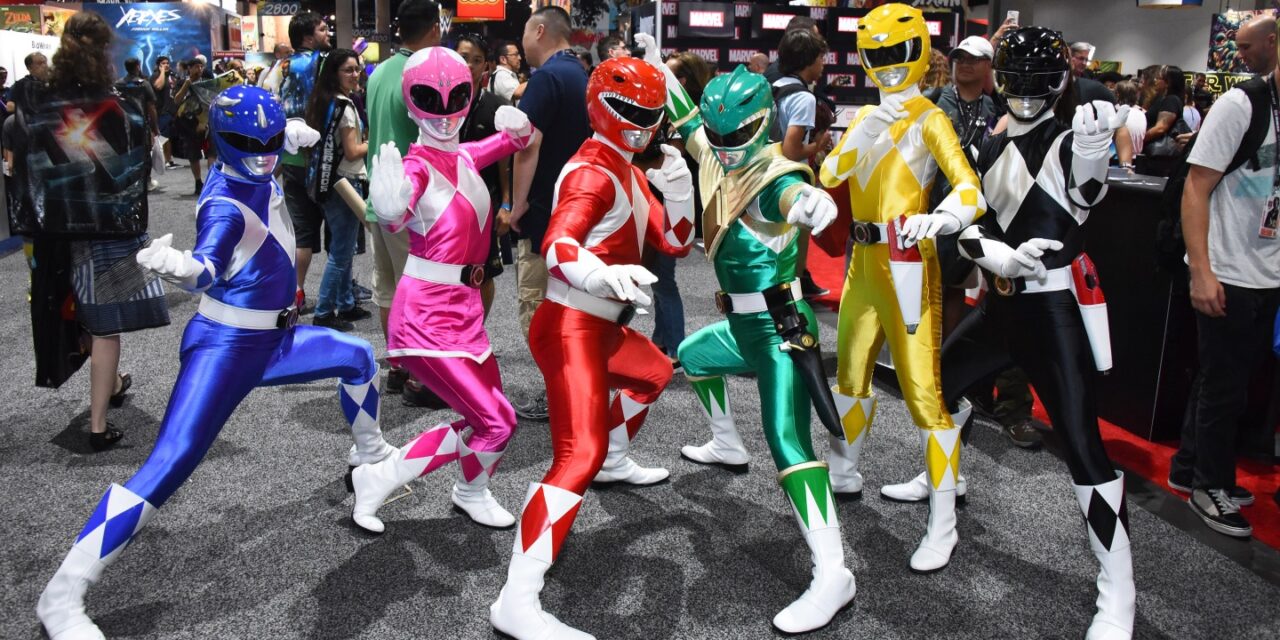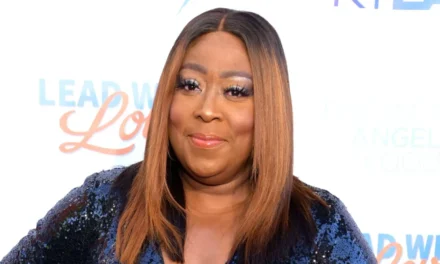“History is seasonal, and winter is coming.” That was the warning issued in 1997 by the generational theorists Neil Howe and William Strauss as they laid out a provocative theory: Americans experience a new social mood or “turning” every 20 years or so, when each new generation comes of age. And every “fourth turning”—that is, every 80 to 100 years—Americans push their society through an urgent, divisive, even violent era of public mobilization and civic upheaval in which their nation is essentially reborn. And the Millennials have a key role to play (Howe had invented the term “Millennials” years earlier, in 1991).
Tracing this generational cycle forward, Howe and Strauss predicted that a “catalyst” around 2005 would trigger a “crisis era” and ultimately a “great devaluation” in which “real hardship will beset the land, with severe distress that could involve questions of class, race, nation, and empire.” This period would climax in the 2020s as “authoritarian, severe, unyielding” elder leaders (of the Boomer generation) would rally warring values camps; “cunning, pragmatic” midlifers (Gen Xers) would furnish the hands-on managers and general officers; and a rising generation of “can-do, team-playing optimists” (Millennials) would provide the critical mass that propels their entire society in a new direction.
During the Fourth Turning, each generation will be called upon, according to its archetype, to fulfill a unique role in pushing the nation through another great gate of history. Their theory held that this happened in the American Revolution, the Civil War, the Great Depression and World War II. And now, Howe writes (co-author William Strauss died in 2007) in a book published this July, their prediction is coming true again as “The Fourth Turning is Here.”
By Howe’s estimation, we are still 10 years away from whatever new order is to come. In the passage below, he reveals how the Millennials, raised to feel protected and special, emerged into an economy of diminished dreams and “wall-to-wall retrenchment.” As children, they saw themselves in the “Power Rangers,” able to accomplish anything with the power of teamwork, but as young adults they saw more resemblance in “The Hunger Games,” a dark vision of economic brutality that devours the young and spits out scarred permatemps. They were raised with a “perfectionist” approach to life as if it was an endlessly customizable menu, but they have turned out chronically stressed, anxious, and at the end of the day, poorer than their parents. Now they’ve had enough and the battle lines are being drawn. In the excerpt below, edited for brevity, is how the man who named the Millennials saw them arrive at this breaking point.
From early childhood on, Millennials have been saturated with popculture superheroes as no other youth generation since the G.I.s in the 1930s. For young G.I.s, the heroes included the Shadow, Buck Rogers, Flash Gordon, the Phantom, and eventually, by the eve of World War II, Superman, Batman, and Captain America. For young Millennials, they now include many of the same characters, profitably reimagined by the DC and Marvel Comics franchises.
Perhaps the earliest and most iconic of these superhero brands was Power Rangers, wholesome kid soldiers in bright, primary color uniforms—no relation to the junk-fed mutant turtles of the Xer child era. Cheerful, confident, and energetic, Power Rangers are nurtured to succeed in the face of great odds. Their very mottos, “Powers Unite” and “The Power of Teamwork Overcomes All,” speak of strength in cooperation and energy in conformity.
Arriving as infants in the early 1980s, first-wave Millennials have no memory of the Consciousness Revolution that was so defining for coming-of-age Boomers or of the parental neglect that was so defining for Gen-X children. What shaped them, instead, was the older generations’ backlash against the social and family experimentation of that era. Rates of divorce, abortion, and per-capita alcohol consumption all began a sustained fall from their early ‘80s high. Books and articles appeared describing how badly kids had been treated in the seventies— and arguing that the next generation needed a new sense of protection, mission, and collective purpose.
With “family values” ascendant, young children began to receive more time and more sheltering from adults. The phrase “kids are special,” hardly ever appearing in the mid-’70s, became commonplace. The evil-child movie, so popular when Xers were small, began bombing at the box office. Suddenly adorable-child movies became in vogue—starting with Baby Boom, Three Men and a Baby, and Parenthood. A decade later, Hollywood featured Boomer soccer moms and dads striving to become better people for the sake of their kids.
And a decade or so after that, “bring your parent to work day” moved into companies, much to the incomprehension of older employees. When the first Millennials appeared, child safety became an obsession. “Baby on Board” signs proliferated. Over the next two decades, the child-safety gadget industry enjoyed double-digit growth.
The Millennial childhood era signaled the arrival of America’s fourth great episode of moral panic over children. From rubber-padded playgrounds, school metal detectors, and drug-free zones to Amber alerts, Megan laws, and Code Adams, a new wall of adult vigilance began to arise. Millennial kids did not resist the sheltering. They welcomed it. They understood the logic: They were special and therefore worthy of protection.
And after leaving home for work or college, Millennials have remained closer to their parents. Recent surveys show that adults in their early 20s talk and spend time with their parents much more often than their parents ever did with their parents.
No youth generation in American history has willingly subjected itself to so many tests and exams—nor has any trusted in the ethic of meritocracy so utterly. Without complaint, Millennial high-school students by the mid-2010s were bearing roughly twice the average daily homework load as late-wave Xers were in the mid-1990s. During the first decade of the 2000s, the number of high-school AP test takers doubled. Extracurricular activities, from drama to club sports, have turned practically professional, draining families of both time and money. While teen interest in most party drugs has ebbed, their reliance on “smart drug” stimulants has soared.
Millennial rates of educational attainment have leapt ahead of prior generations at every level, especially in college and graduate degrees—despite exorbitant higher-ed tuition hikes that threaten to mortgage their futures (and strip their parents of savings).
If Millennial youth valued being closer to their parents, so too did they value being closer to one another and their community. By high school, rates of “volunteering” had soared. By the early 2010s, Millennials were flocking to Mark Zuckerberg’s novel “social media” brand. Soon they migrated en masse to multiple digital fishbowl environments in which everybody keeps track of everybody in real time.
Where young Boomers and Xers so often fled the influence or surveillance of the community, Millennial youth embraced it, their most dreaded fear being rejection, isolation, and loneliness—that is, “FOMO.”
Over the last 20 years, Millennials have certainly shifted the youth culture in a sunnier if blander direction. It hit music in the late nineties with the rise of poppy, choreographed boy bands—and later with the mainstream collaborative sound of such big Millennial brands as Taylor Swift, Drake, Ariana Grande, and Bruno Mars. It hit network TV and movies starting in the mid-2000s, shifting programming toward shows with closer and more supportive families, more superheroes banding together to save the world, and greater sharing across diverse ethnicities and gender roles. Sitcoms feature smarter and higher-achieving young adults, more like The Big Bang Theory than Seinfeld.
For Millennials, wall-to-wall retrenchment has literally defined their entry into the adult workplace. Millennial first-wavers came of age with the dotcom bust and 9/11 and were just settling into budding careers when the Great Recession altered their life trajectories. For the last wave, youth hiring improved for two or three years in the late-2010s, but that respite too was upended by the pandemic lockdown of 2020. Like Xers, Millennials have fallen behind their parents in real earnings at the same age—and, by some measures, they have even fallen behind Xers alone. They’re also lagging in wealth accumulation.
Young couples have the lowest homeownership rate since their Silent grandparents in the early 1950s (though at that time, unlike today, the rate was rising rapidly). Today’s gap in self-reported “economic satisfaction” between 30-somethings (low) and all their elder family relatives receiving Social Security (high) is the widest ever measured. These are frustrating results for a generation which, unlike Boomers or Xers, worked hard to make themselves “career ready”: Their parents expected so much of them, and they of themselves.
Many are haunted by the fear that this inadequacy is personal and doesn’t affect their peers. Millennials are responding by trying harder to achieve—earning another degree or outworking their rivals in the Xers’ “hustle economy.” Averse to “vacation shame,” they are more likely than older generations not to take earned days off.
Group living, rare among their parents after college, has become almost the rule for young urban workers. A rising share of Millennials—roughly one-half of all adults under thirty since the pandemic—are living with their parents. That’s roughly the same percentage as young G.I.s living at home near the end of the Great Depression in 1940. Millennials are less likely than Xers to “boomerang” reluctantly back home, since a growing number never really left home in the first place.
Many regard the unbridled marketplace as a child-devouring Moloch, evoked in their imaginations by The Hunger Games, Divergent, or Squid Game. They’re replacing credit cards with cash cards and taking out fewer mortgages, mostly by buying “tiny houses” or just by renting rather than owning.
Sheer precarity has persuaded Millennials to defer or avoid rites of passage that earlier generations took for granted: moving, getting married, having children. Millennials bring an unromantic prudence to such choices that often surprises their parents. Marriage comes after the achievement of economic security, not before, and a low credit score can be a relationship ender. Homogamy—marriage within the same socioeconomic class—has soared to levels not seen since the pre−World War I Edwardian era. Prenups and separate bank accounts are becoming more common among newlyweds. For their Boomer or Xer parents, “cool” once meant being a rebel, nonconformist, or risk-taker. For today’s young adults, it means honest, friendly, or competent.
The struggle to achieve, behave, fit in, risk-manage, and please others—all at the same time—is pushing Millennials toward an optimizing, menu-driven, even perfectionist approach to life that often leaves them chronically stressed: every aspect of “adulting” must be step-by-step learned and mastered. Young women, excelling at this play-by-the-rules game plan, have surged ahead of young men in higher-ed degrees and in preparation for professional careers. In pursuit of greater focus, they have fueled the last decade’s largest increase in Adderall and Ritalin prescriptions. They also increasingly complain of burnout. Generalized anxiety disorder is by far the fastest-growing psychiatric complaint among both the men and women of this generation, the result of rarely being able to let go.
Anxiety may help explain the remarkable decline in courtship and sexual activity among Millennials. Few are fully comfortable with the rituals of dating, and many fear the risks of casual sex. Young men feel threatened by their inability to provide, young women by their inability to be provided for. They regard married family life as such an important bulwark of social health that they believe it ought to be available to everyone, including gay men and women. Yet here again Millennials in their late 20s and 30s have trouble making it work in their own lives. A record share of them continue to avoid marriage because they feel they aren’t prepared for it, can’t afford it, don’t dare risk it, can’t find a reliable partner—or all of the above.
Where Boomer young adults once prioritized, in popular culture, the individual and the interior, Millennials are prioritizing the opposite— the collective and the exterior. In dress, Millennials prefer “normcore.” In music, they express every emotion—except rage or confrontation. A large share of their movies are formulaic sequels in which the naughty or nihilistic edges are smoothed over. Unlike Xers, they value fitting in and dread being alone. Unlike Boomers, they prize facts about the world and shun metaphors about its meaning. With cancel culture, Millennials celebrate silencing the transgressors.
In politics, Millennials have become the most Democratic-leaning generation of young-adult voters since the G.I.s during the New Deal. Among Millennials, notoriously, “socialism” is almost as popular as “capitalism.” While Millennials have been around for a while—their first wave is now reaching 40—they remain a study in unfamiliar contrasts. While all generations express rising discontent about America’s current direction, Millennials are the most likely (on both the left and the right) to believe that the current regime is fundamentally broken and needs to be overhauled if not replaced.
Simon & Schuster
From THE FOURTH TURNING IS HERE: What the Seasons of History Tell Us about How and When This Crisis Will End by Neil Howe. Copyright © 2023 by Nina Neil Howe. Reprinted by permission of Simon & Schuster, Inc. Audio excerpt courtesy of Simon & Schuster Audio read by Neil Howe, from the audiobook THE FOURTH TURNING IS HERE by Neil Howe.




